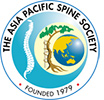What is Arthroscopy?
Arthroscopy is a surgical procedure during which the internal structure of a joint is examined for diagnosis and treatment of problems inside the joint.
What conditions are treated with arthroscopic surgery?
Arthroscopic examination of joints is helpful in diagnosis and treatment of the following conditions:
- Inflammation: Synovitis, the inflammation of the lining of the knee, shoulder, elbow, wrist, or ankle.
- Acute or chronic injury: Injuries to the shoulder, knee and wrist joint such as cartilage tears, tendon tears, carpal tunnel syndrome.
- Osteoarthritis: A type of arthritis caused by cartilage loss in a joint.
- Removal of loose bodies of bone or cartilage that becomes logged within the joint.
When is joint replacement considered?
Joint replacement is a surgical procedure employed to replace the damaged joint with artificial implants and is usually performed when the joint is severely damaged by osteoarthritis, rheumatoid arthritis, post-traumatic arthritis or avascular necrosis.
How safe is joint replacement surgery?
Joint replacement is a relatively safe procedure. Dr. Suresh has performed a large number of hip and knee joint replacements with positive results. However as with any surgery, joint replacement can be associated with a few complications. Some of the complications which can occur following a joint replacement surgery include infection, damage to nerves or blood vessels, loosening or instability of artificial components, wound irritation and wear of the artificial components.
What is degenerative disc disease?
This is a condition where the intervertebral disc, the gel-like material between the vertebrae, has begun to wear out due to aging, repetitive stress, smoking, genetics, etc. In most circumstances the cause is multi-factorial, and unless there is compression of the nerves or spinal cord, will not improve with surgery. It is a very common condition and may not even cause symptoms in many people.
What is arthritis and what causes it?
The term arthritis literally means inflammation of a joint. The exact cause is never known. In general, it affects people as they get older. Other causes include injury, genetic predisposition, and some high level sports that can lead to joint injury. Arthritis is more common in women than in men.
How long will it take to recover from a hip replacement?
Recovery from a total hip replacement generally occurs within six weeks. In most cases, however, you will be restricted to using a walker for few weeks after the surgery. You will gradually return to normal activities with no assistive devices at six weeks.
What are common spinal conditions that cause low back pain?
A low back pain is often a common symptom of most of the spinal conditions which may result by a sudden injury to the muscles, ligaments, bones, and nerves in your spine. The common spinal conditions that can cause low back pain are herniated disc, spinal stenosis, scoliosis, kyphosis, muscle strain or spasm and fracture of the spine caused by osteoporosis. Rarely, arthritic conditions of the spine, spine tumor and infections (osteomyelitis, diskitis) can also cause low back pain.
Will physical therapy be required after surgery?
Getting a full range of motion, strength, and flexibility back after surgery usually takes time. That is where pre-operative exercise, education, and post-operative physical therapy programs come in – to ensure you are physically and emotionally prepared for surgery and to maximize your recovery after surgery.
What should I bring with me when I come for an appointment?
When you come for your appointment remember to bring the following:
- Driver’s License or a valid ID
- Insurance information
- Referral Letter (if required)
- Reports, X-rays, MRI’s, CT scans etc. and any other relevant information
- List of medications (if any)
How do I schedule an appointment?
You can schedule an appointment by calling us or sending a whats app message to our call center.















